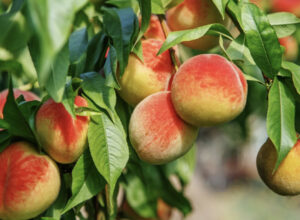How to Care for a Lemon Tree Indoors: Useful Tips

Residing in a region conducive to lime tree growth is a fortunate circumstance. Nothing compares to the joy of harvesting fresh lemons from a tree situated in one’s own garden. The official title of the lime you might recognize from the supermarket is Citrus × latifolia, more commonly known as the Persian lime. These trees are renowned for their profuse fruiting and rapid maturation. For those who frequently incorporate limes in culinary endeavors and are located in warm climates, it might be beneficial to consider planting a lime tree if there’s space available.
Delving Deeper: The Cultural and Health Significance of Lime Trees
Lime trees, known scientifically as Citrus aurantiifolia, have held a special place in human history, weaving their way into our culture, cuisine, and health practices. The story of the lime tree is not merely about a plant that gives zesty fruits; it’s about a tree that has global significance and multifaceted importance.
Historical and Cultural Impact
Lime trees, believed to have originated in Southeast Asia, have been a part of human culture for thousands of years. They made their journey along trade routes, spreading to the Mediterranean region, Africa, and eventually the Americas. Along with their travel, they carried tales, traditions, and a rich cultural significance.
In several cultures, the lime tree and its fruit have symbolic meanings. For instance, in some Asian traditions, limes are believed to repel evil spirits and bring about prosperity. They are often used in rituals and ceremonies aimed at purifying spaces and individuals.
Moreover, the lime has been an essential fruit in maritime history. British sailors, known colloquially as ‘limeys’, were given lime juice during long sea voyages to combat scurvy, a disease caused by vitamin C deficiency. This practice not only saved countless lives but also highlighted the immense health benefits of this humble fruit.
Culinary Importance
Limes have been a staple in global cuisines, offering a unique blend of tartness and flavor that enhances dishes. From the tangy kick in Mexican guacamole to the refreshing twist in a Thai curry, limes have been essential in imparting distinctive flavors.
Lime zest and juice are often the unsung heroes in many culinary creations. Their acidity can balance the richness of dishes, cut through the fattiness of meats, and elevate the flavor profile of desserts. Drinks like the classic Mojito or Margarita would be unthinkable without a splash of lime. Additionally, lime pickles and marmalades have been cherished additions to many global diets.
Health and Medicinal Value
Beyond their culinary versatility, limes have been recognized for their health benefits. Packed with vitamin C, they are a potent antioxidant, providing a boost to the immune system and aiding in the body’s fight against free radicals.
Traditional medicine systems across the world have used limes as a remedy for various ailments. In Ayurveda, for example, lime is considered a cooling agent, believed to aid digestion and soothe acidity. The high citric acid content in limes has also made them effective in treatments aimed at kidney stones.
The essential oil derived from lime peel is used in aromatherapy, believed to invigorate the mind and combat fatigue. Lime’s antibacterial properties have also made it a popular ingredient in natural cleaning agents and skincare products.
Environmental Significance
Lime trees, like most citrus trees, play a role in environmental balance. They aid in carbon sequestration, absorbing carbon dioxide and releasing oxygen, contributing to cleaner air. Moreover, they are a habitat for various birds and insects, playing a pivotal role in local ecosystems.
The root systems of lime trees, especially when grown in suitable conditions, can aid in soil stabilization. They help maintain soil structure, prevent erosion, and enhance the soil’s ability to retain water.
Future Perspectives and Conservation
As global climate patterns shift, the cultivation of lime trees, like many other crops, faces challenges. Drought, diseases, and changing weather patterns can affect yield and quality. Recognizing the multifaceted importance of lime trees, efforts are underway in various parts of the world to develop more resilient lime tree varieties and sustainable farming practices that can ensure their continued growth and relevance.
Moreover, as urban spaces expand, there’s a growing trend of integrating lime trees into city landscapes, both for their aesthetic appeal and the tangible health benefits they bring in terms of air purification.
Lime Tree Specifications at a Glance
Table: Lime Tree Specifications
| Feature | Detail |
| Common Name | Lime tree, Persian lime tree |
| Botanical Name | Citrus × latifolia |
| Family | Rutaceae |
| Plant Type | Tree |
| Mature Size | 15-20 ft. tall and wide |
| Sun Exposure | Full sun |
| Soil Type | Loamy, moist, well-drained soil |
| Soil pH | Acidic to neutral soil |
| Bloom Time | May to June |
| Hardiness Zones | 9-11 (USDA) |
| Native Area | n/a (hybrid) |
Planting Instructions for Lime Trees
Once implanted, lime trees demand minimal attention provided they’re sited in suitable locations.
Choice of Planting Location:
Seek a location bathed in sunlight for a minimum of 6 hours daily. Ensure forthcoming vegetation or infrastructural additions won’t overshadow your tree. Lime trees thrive in nutrient-rich substrates. Enhance your soil with compost and organic manure if it lacks richness. Drainage is crucial, as lime trees falter in waterlogged conditions. Elevated planting or the addition of drainage-enhancing supplements might be beneficial.
Positioning, Depth, and Support Guidelines:
Lime saplings should maintain a 15-feet gap from other trees. The planting cavity should mirror the rootball’s depth, but be double its width. For non-windy locales, supporting stakes are redundant.
Essentials of Lime Tree Upkeep
- Lighting: Sunlight is pivotal for fruit yield and tree health. Continuous sun exposure is especially vital for containerized trees.
- Soil Profile: Soil vitality is paramount for blooming and fruiting. Lime trees favor nutrient-laden substrates that are moist yet provide efficient drainage.
- Watering Guidelines: Hydration promotes juicy fruit development. Employ a soaker hose to maintain consistent soil moisture. Re-water once the soil feels arid.
- Ambient Conditions: Emulating tropical climates is beneficial. Lime trees falter under frigid temperatures. Thus, adhere to USDA zones between 9 and 11.
- Nutritional Supplements: While not imperative, fertilizers enhance fruit yield. Employ a 2:1:2 NPK ratio fertilizer thrice annually. Specialized citrus fertilizers can be sourced from gardening centers.
- Pollination Details: Lime trees are self-fertile, eliminating the need for multiple trees.
Types of Lime Trees
While the Persian lime dominates markets, several other culinary variants exist, such as the Kaffir Lime, Key Lime, Philippine Lime, and the Rangpur Lime.
Harvesting Persian Limes:
The lime tree continually produces fruit. Upon maturing, the fruit softens and assumes a yellowish-green hue, signaling harvesting readiness.
Containerized Lime Tree Cultivation:
Potted lime trees grant the flexibility of relocation, catering to sunlight, hydration, and temperature needs. The soil mix, hydration, and temperature guidelines previously detailed apply here. Should temperatures plummet below 50°F, indoor relocation is advisable.
Lime Tree Pruning:
Lime trees have a slow growth trajectory, mandating minimal pruning. The focus should be on removing deteriorating branches. For tall trees, consider professional pruning services.
Propagation of Lime Trees:
Given the seedless nature of Persian limes, cuttings remain the sole propagation method. However, commercially sourced saplings are superior in vigor and health.

The Aesthetic Appeal of Lime Trees
Lime trees aren’t just renowned for their fruits; they are also celebrated for their aesthetic value. With lush green leaves, white fragrant blossoms, and the striking contrast of bright green or yellow fruits against the foliage, they are a sight to behold. Many landscapers and garden enthusiasts incorporate lime trees into designs not only for their productive yield but also for their ornamental beauty.
Gardens and backyards that house lime trees benefit from their year-round appeal. In spring, the air fills with the sweet scent of their blossoms, attracting pollinators and creating a biophilic experience for residents. The dense canopy provides shade in the summer, making it an ideal spot for relaxation and outdoor activities. Additionally, lime trees in gardens often become focal points, drawing attention with their vibrant fruits and serving as conversation starters.
Lime Trees in Literature and Art
In literature, lime trees often serve as symbols of love, hope, and renewal. Their enduring nature and the rejuvenation they undergo each spring make them apt metaphors for resilience and rebirth. Many poets have sung praises of the tranquil shade they offer and the serenity they bring to any landscape.
Artists, too, have been captivated by lime trees. From detailed botanical illustrations highlighting the anatomy of the tree and its fruit to impressionistic paintings capturing the play of light and shadow on its leaves, the lime tree has graced many canvases. Its vivid green hues, juxtaposed with its fruits, offer a delightful palette that has inspired artistic interpretations across different cultures and eras.
Conclusion
Indoor lime trees are more than just ornamental elements for our living spaces. They intertwine the beauty of nature with practical benefits, serving as both a source of fresh limes and a piece of living art. By understanding their needs and offering them the right environment, we not only foster their growth but also cultivate a deeper connection with nature that thrives within our own walls. With the right care, every lime tree can be a beacon of lush greenery, fragrant blossoms, and tangy fruits, reminding us of nature’s bounty and the simple joys it brings.
FAQ
1. Can lime trees grown indoors produce fruits?
Absolutely! With proper care, especially ensuring adequate sunlight or grow light exposure, indoor lime trees can fruit just as well as their outdoor counterparts.
2. How often should I water my indoor lime tree?
Indoor lime trees should be watered when the top inch of soil feels dry. It’s crucial to ensure that the container has proper drainage to prevent root rot.
3. What type of fertilizer works best for lime trees?
Lime trees generally thrive with a balanced fertilizer, especially those with a 2:1:2 NPK ratio. You can use a slow-release granular fertilizer or a liquid one, depending on your preference.
4. Can I move my indoor lime tree outdoors during warmer months?
Yes, you can! If you decide to do this, ensure a gradual transition to help the tree acclimate to direct sunlight and prevent sunburn.
5. How do I know when my limes are ready to be harvested?
A lime is typically ready for harvest when it attains a vibrant greenish-yellow hue and slightly gives in to a gentle squeeze. It’s always better to taste-test one before harvesting in bulk.




